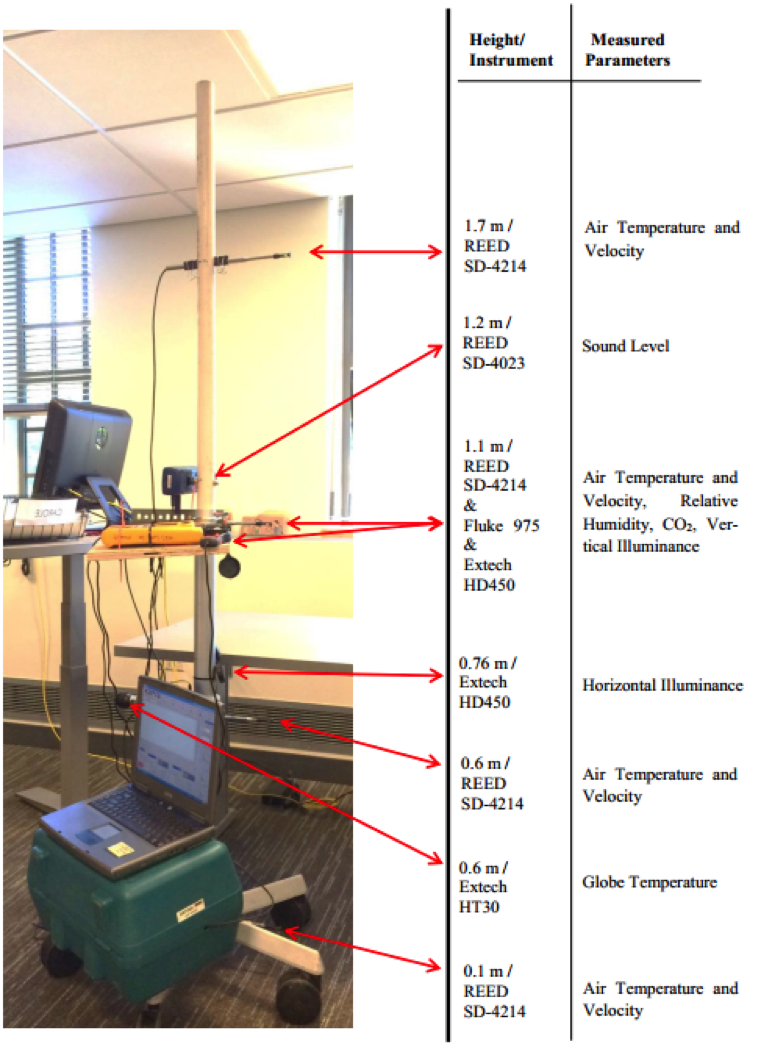
A research team is using a Green Seed Fund grant to test whether or not the indoor climate control system in the University of Washington student union building (HUB) is helping it save energy.
The Green Seed Fund awarded the group $75,410 last year, giving them the means to purchase a wide range of monitoring equipment. By attaching the devices to vertical rods, the group could record data such as air temperature, air velocity, and humidity from the ground to the ceiling. With this set up, the group proceeded to test the LEED-certified HUB building’s ability to regulate the indoor conditions, and see if its rooms meet the standards set by the American Society of Heating, Refrigeration and Air-Conditioning Engineers (ASHRAE). By calculating the temperature difference between the top of the room to the bottom, the group was able to chart out the vertical temperature difference at various locations around the HUB. Their monitoring at the popular food stand Firecracker for example, revealed that from 10am to 3pm the room’s temperature change exceeded the ASHRAE limit. However after peak service hours, from 3pm to 8am the next day, the difference was significantly below the limit.
Group members were also posted near the HUB’s automatic climate control windows in order to watch and record their activity. By comparing opening and closing times to the current temperature, the group could analyze whether the building was responding correctly to the indoor stimuli. The group also could analyze whether opening and closing the window was having a positive effect on the indoor temperature.
The Indoor Environment Quality Assessment research project is expected to be completed by 2015. This project’s results may reveal whether or not the decisions made by the HUB’s automatic climate control system are reducing the building’s carbon footprint. In the future, this project may be used to assess other UW campus buildings and provide starting point for improving indoor environment management and energy consumption.
For more information about this and other Green Seed Fund projects go to: sustainability.uw.edu/gsf/2014-projects
For more information on submitting a proposal to the Green Seed Fund go to: https://sustainability.uw.edu/green-seed-proposals